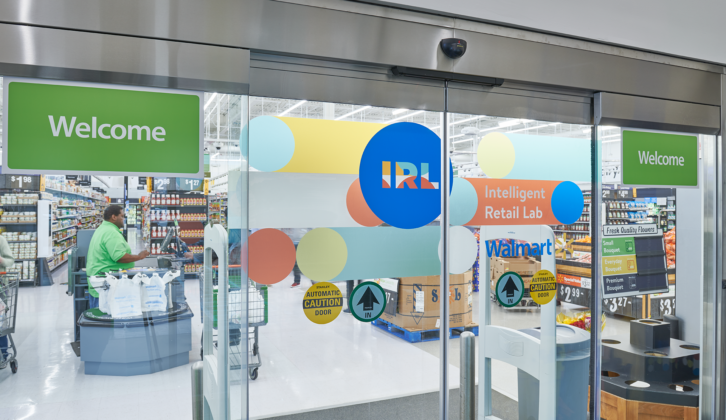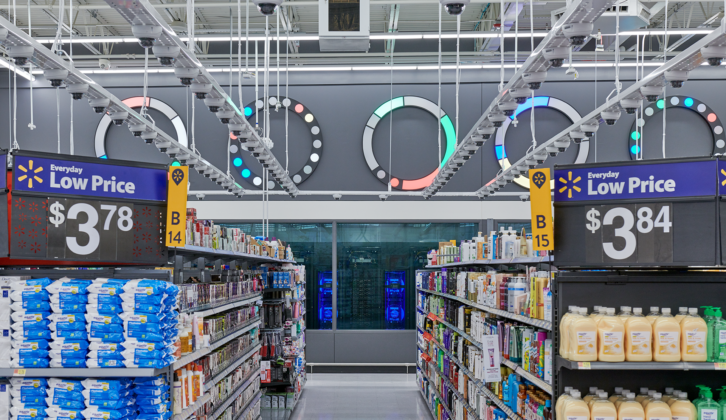
With the pace of change accelerating in the retail world, and even more so for consumer tech merchants, TWICE is keeping close tabs on key players that appear to be reaching either strategic or existential crossroads as part of our 2019 Top 100 CE Retailers Report.
Best Buy
Topping our list of retailers to watch is Best Buy, if for no other reason than it controls 23 percent of all the revenue generated by the industry’s 100 largest dealers. As the tail that wags the dog, the chain is also a good barometer for the health and well-being of the tech business. And, to continue the medical metaphor, when Best Buy sneezes, major manufacturers get sick.
Which is why all eyes will be on Richfield, Minn., this June, when the company’s CFO, Corie Barry, succeeds Hubert Joly as chief executive. In his seven short years at the helm, the dapper Frenchman did what most deemed impossible: reinvigorated a legacy brand that had been written off by pundits as a dinosaur.
Purchase The 2019 TWICE Top 100 CE Retailers Report.
Made smaller, nimbler and more relevant under his Renew Blue turnaround strategy, Best Buy is now on stable ground, meaning Joly’s job is done. The question is, does Barry have the gumption to maintain the momentum, and carry the company to the next level? Does she have the vision to determine what that next level even is? Apparently the board, and the stock market, think so. We’ll see.
Amazon
As the fall of the Roman Empire learned us, nothing lasts forever, and the bigger they are the harder they eventually fall. Not that we’re predicting a collapse of the House That Bezos Built; but three factors are working against the No. 2 CE seller that could certainly take some wind out of its sales.
The first is strictly math: The consumer tech industry is finite, and as Amazon approaches market saturation levels, it will find it increasingly difficult to sustain the phenomenal gains, at least in CE, that have contributed to its dizzying rise.
Watch: Meet ‘Scout,’ Amazon’s Delivery Robot
The second force at play is government. Founder/CEO Jeff Bezos and all his belongings are on President Trump’s hit list, and no doubt the administration is just itching to find an anti-competition angle to curtail him. Adding to the regulatory scrutiny is a tech giant backlash fostered by Facebook’s shenanigans, which could lead to forced divestitures of say, Amazon’s profit-making engine AWS, which affords it such low- to no-margin price points.
See also: Top 100 CE Retailers Report: Sales Top $140B
Third is competition. Amazon pretty much had an open field for the past 20 years, as tech retail grew fat and lazy on TV margins and failed to invest in the future. Those that survived the Great Recession became quick studies in digital sales and marketing, and learned to make their stores a multichannel asset rather than a brick-and-mortar albatross. On a national level, this has allowed retailers like Best Buy and Walmart to finally give Amazon a run for the money, adding to the headwinds. How this all plays out in the years ahead remains to be seen.
Walmart
The Roman Empire reference is relevant here too. It wasn’t all that long ago that No. 3 Walmart was depicted in a buying group video as The Death Star, the invincible Evil Empire that threatened to dominate all of retail. And while it remains the world’s largest company by revenue according to the Fortune Global 500, it no longer seems the menace it once was, perhaps overshadowed by Amazon’s inroads.
But all that’s about to change. Supplied by an annual gross income of half a billion dollars, the discounter has been burning through cash to update its massive operations for the digital age, both online and in-store. Witness the Sam’s Club prototype store in Dallas, which features all the bells and whistles and then some of Amazon’s vaunted auto-pay Go stores, including cashier-less checkout, in-store navigation, and AR item descriptors that seemingly leap from product labels. Or the online shopping tours that allow customers to wander virtually through a well-appointed apartment and purchase highlighted items that appeal to them.
See also: Best Buy Keeps The Crown, But Barely
And if that’s not sci-fi enough, the Bentonville Bunch is loading up their namesake stores with all manner of robots that stock shelves, sort deliveries and sweep floors, and is delivering hundreds of colossal “Pickup Towers” that automatically dispense online purchases. Take that e-tailers!
See Inside IRL, Walmart’s New High-Tech Store
The IRL is located in Levittown, N.Y.
Walmart
Inside the IRL
Walmart
An IRL Interactive Screen
Walmart
IRL’s Data Center
Walmart
The Data Center features an Information Screen to provide details to consumers.
Walmart
The Information Screen is interactive and is part of Walmart’s efforts to be transparent about its data collection.
Walmart
Inside the IRL Data Center
Walmart
Another IRL interactive screen
Walmart
Sears/Kmart
When it comes to extended lives, cats have nothing over Sears (No. 17) and Kmart (No. 45). Most analysts expected parent company Sears Holdings to run out of cash three Christmases ago, and the fact that both are still around in 2019 is more a testament to the dogged determination (some would argue greed) of former chairman/CEO and new owner Eddie Lampert than to marketplace demand.
Indeed, while Sears was integral to the lives of our suburban parents and grandparents and a rural America before them, its relevance to a generation of on-trend millennials went the way of the obsolete malls it’s housed in. With about a quarter of the store fleets remaining, and relieved of the former company’s crushing debt, Lampert’s line is that a more adroit and “asset-light” New Sears is now better positioned to face down the competition.
But absent a new go-to-market strategy and all of its former vendor base, the way forward is cloudy at best — and that’s assuming its reorganization plan gets approved. That won’t happen if the old Sears Holdings is administratively insolvent, which it appears to be. Is there a 10th life in the cards for Sears and Kmart? Stay tuned.
Staples, Office Depot & GameStop
We lumped these three together because they represent the last vestiges of the big-box specialty niche stores. Remember CompUSA? Or SNL’s Scotch tape boutique?
To their credit, Staples (No. 14), Office Depot (No. 13) and GameStop (No. 7) saw the writing on the wall and worked hard to avert what may be the inevitable. Surrounded by competition from Amazon, warehouse clubs and discount stores, the two remaining office supply chains beseeched government regulators to allow them to merge, to no avail, and are now doubling down on the B-to-B channel for salvation.
GameStop, meanwhile, is facing brutal competition from direct downloads, free streaming games like Fortnite, and the PC’s renewed popularity. The company under, the late Paul Raines, diversified into mobile communications, Apple products and novelty collectibles, and spent much of the past year shopping itself around, also to no avail.
Should these three retailers to watch become a death watch, at least they don’t go gentle into that good night.




















